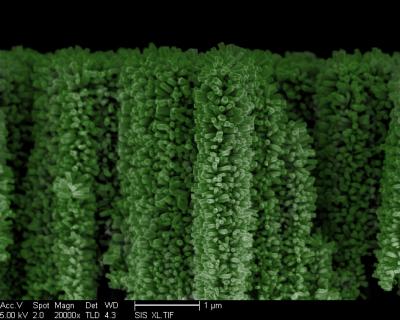Reporting in the journal Nanoscale, the team from University of California (UC) San Diego said that nanowires, which are made from materials including silicon and zinc oxide, offer an economical way to deliver hydrogen fuel on a mass scale.
‘This is a clean way to generate clean fuel,’ said Deli Wang, professor in the Department of Electrical and Computer Engineering at the UC San Diego Jacobs School of Engineering.
In a statement, Wang said that the trees’ vertical structure and branches are key to capturing the maximum amount of solar energy because the vertical structure of trees adsorbs light while flat surfaces reflect it.
Wang’s team is said to have mimicked this structure in its so-called 3D branched nanowire array, which uses photoelectrochemical water splitting to produce hydrogen gas.
‘Hydrogen is considered to be a clean fuel compared with fossil fuel because there is no carbon emission, but the hydrogen currently used is not generated cleanly,’ said Ke Sun, a PhD student in electrical engineering who led the project.
By harvesting more sunlight using the vertical nanotree structure, Wang’s team has developed a way to produce more hydrogen fuel efficiently compared with planar counterparts.
‘Moreover, with this structure, we have enhanced — by at least 400,000 times — the surface area for chemical reactions,’ said Sun.

Wang’s team eventually hopes to develop artificial photosynthesis. In photosynthesis, as plants absorb sunlight they also collect carbon dioxide (CO2) and water from the atmosphere to create carbohydrates to fuel their own growth. The team hopes to mimic this process to also capture CO2 from the atmosphere, reducing carbon emissions, and to convert it into hydrocarbon fuel.
‘We are trying to mimic what the plant does to convert sunlight to energy,’ said Sun. ‘We are hoping that, in the near future, our nanotree structure can eventually be part of an efficient device that functions like a real tree for photosynthesis.’




Nanogenerator consumes CO2 to generate electricity
Nice to see my my views being backed up by no less a figure than Sabine Hossenfelder https://youtu.be/QoJzs4fA4fo